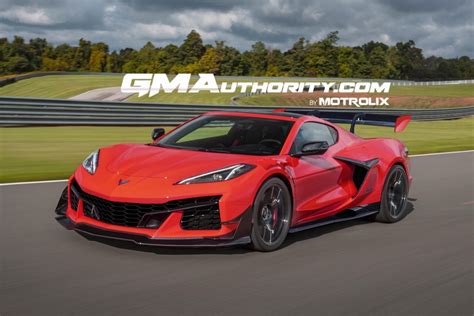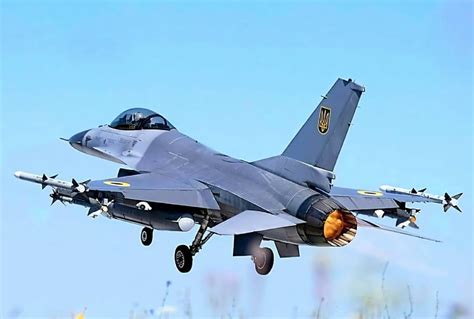
Chevy’s highly anticipated C8 Corvette ZR1 is facing scrutiny as claims of its groundbreaking performance capabilities come under question. Initial reports suggested the ZR1 would boast upwards of 1,000 horsepower, potentially utilizing a hybrid powertrain, but emerging evidence points to a more conventional, albeit still powerful, configuration. This discrepancy has ignited a firestorm of debate among automotive enthusiasts and industry experts alike, raising questions about transparency and marketing tactics.
The core of the controversy revolves around the ZR1’s engine. For months, rumors swirled regarding a hybrid setup, perhaps even borrowing technology from Cadillac’s Project GTP Hypercar. This fueled expectations of a revolutionary powertrain exceeding the 1,000-horsepower mark. However, recent leaks and insider information suggest that the ZR1 will instead feature a modified version of the LT6 engine found in the Z06, possibly dubbed the LT7, with enhancements such as twin turbochargers to achieve a targeted output of around 850 horsepower.
“The biggest question mark is under the hood,” stated an anonymous source familiar with the ZR1’s development, as reported by Yahoo Autos. “Early whispers talked about hybrid assistance, but the latest intel points to a purely internal combustion affair.”
The shift away from a hybrid system, while potentially disappointing to some, doesn’t necessarily diminish the ZR1’s performance potential. An 850-horsepower twin-turbo V8 would still position it as one of the most powerful Corvettes ever produced, surpassing even the legendary C7 ZR1. However, the discrepancy between initial expectations and the likely reality has led to accusations of misleading marketing and inflated claims.
The implications of this revelation extend beyond mere disappointment. It raises concerns about Chevrolet’s communication strategy and whether the company intentionally fostered unrealistic expectations to generate hype. Such tactics could damage the brand’s credibility and erode trust among its loyal customer base. The launch of the ZR1 is now burdened with the challenge of managing expectations and justifying the car’s performance capabilities in the face of previous, arguably exaggerated, rumors.
Furthermore, the controversy surrounding the ZR1’s powertrain highlights the ongoing debate within the automotive industry regarding the future of performance cars. While electrification is gaining momentum, traditional internal combustion engines continue to hold a strong appeal, particularly for enthusiasts who value the sound, feel, and raw power of a V8. The ZR1’s decision to stick with a twin-turbo V8, while perhaps a pragmatic one, reflects this ongoing tension between tradition and innovation.
The exact reasons behind the shift away from a hybrid powertrain remain unclear. Factors such as cost, complexity, and weight could have played a role. Developing a reliable and high-performing hybrid system capable of handling the ZR1’s extreme power output would undoubtedly have been a significant engineering challenge. Sticking with a proven platform, such as the LT6-based LT7, may have been seen as a more cost-effective and less risky approach.
Regardless of the reasons, the controversy surrounding the C8 Corvette ZR1 serves as a cautionary tale about the dangers of overhyping a product and the importance of managing expectations. Chevrolet now faces the task of convincing enthusiasts that the ZR1, even without a hybrid powertrain, is still a worthy successor to the ZR1 nameplate and a true performance icon. The official unveiling of the ZR1, expected in the coming months, will be closely watched by the automotive world. The focus will not only be on the car’s performance figures but also on Chevrolet’s ability to address the concerns raised by the recent controversy and restore confidence in the ZR1’s capabilities. The stakes are high, as the ZR1 represents not only the pinnacle of Corvette performance but also a critical test of Chevrolet’s brand reputation.
The shift away from a hybrid powertrain also has implications for the Corvette’s future. While the all-electric Corvette is reportedly in development, the ZR1’s decision to stick with a traditional V8 suggests that Chevrolet is not yet ready to fully embrace electrification for its flagship performance model. This could be due to concerns about battery technology, range anxiety, or simply a desire to cater to the preferences of its traditional customer base. However, as electrification continues to advance, it is likely that future generations of the Corvette will incorporate hybrid or all-electric powertrains. The ZR1 may represent the last of a dying breed: a pure, unadulterated internal combustion performance car.
The impact of the ZR1 controversy extends beyond the Corvette community. It also affects the broader automotive industry, particularly the performance car segment. Automakers are constantly pushing the boundaries of performance, seeking to outdo each other with ever-more powerful and sophisticated machines. However, the ZR1’s case highlights the importance of balancing performance with reliability, affordability, and environmental responsibility. The future of performance cars will likely involve a combination of internal combustion engines, hybrid systems, and electric powertrains, each with its own set of advantages and disadvantages. The ZR1’s journey serves as a reminder that there is no one-size-fits-all solution and that automakers must carefully consider the trade-offs involved in developing high-performance vehicles.
The pricing strategy for the C8 Corvette ZR1 will also be closely scrutinized. Given the expected performance figures and the absence of a hybrid powertrain, the ZR1 will need to be priced competitively against its rivals, such as the Porsche 911 Turbo S and the McLaren 720S. If Chevrolet attempts to charge a premium price based on the ZR1’s name and heritage, it could face criticism from enthusiasts who feel that the car does not live up to its potential. A more reasonable pricing strategy, on the other hand, could help to mitigate the negative impact of the powertrain controversy and attract a wider range of buyers.
The success of the C8 Corvette ZR1 will ultimately depend on its ability to deliver on its performance promises, regardless of whether it features a hybrid powertrain. If the ZR1 can offer blistering acceleration, exceptional handling, and a thrilling driving experience, it will likely be forgiven for not meeting the initial expectations of some enthusiasts. However, if the ZR1 fails to live up to its potential, the controversy surrounding its powertrain could linger for years to come. The ZR1’s launch represents a critical moment for Chevrolet and the Corvette brand, and the outcome will have a lasting impact on the future of performance cars.
The interior and exterior design of the ZR1 are also expected to be significantly different from the standard C8 Corvette and the Z06. Spy shots and renderings suggest that the ZR1 will feature a more aggressive aerodynamic package, including a larger front splitter, side skirts, and rear wing. These enhancements are designed to improve downforce and stability at high speeds. The interior is also expected to receive upgrades, such as sport seats, a unique steering wheel, and carbon fiber trim. These changes will help to differentiate the ZR1 from other Corvette models and reinforce its status as the ultimate performance machine.
The production numbers of the C8 Corvette ZR1 are also expected to be limited, which could further increase its appeal to collectors and enthusiasts. Chevrolet has not yet announced how many ZR1s will be produced, but it is likely that the car will be more exclusive than the standard Corvette and the Z06. This limited availability could drive up prices and make the ZR1 a highly sought-after commodity. The ZR1’s exclusivity will also help to solidify its position as the pinnacle of Corvette performance and a true automotive icon.
The controversy surrounding the C8 Corvette ZR1’s powertrain also highlights the challenges of developing and marketing high-performance vehicles in an increasingly regulated and environmentally conscious world. Automakers are facing stricter emissions standards and fuel economy requirements, which are forcing them to rethink their approach to performance. Hybrid and electric powertrains offer a way to meet these requirements while still delivering impressive performance, but they also come with their own set of challenges, such as cost, complexity, and weight. The ZR1’s case demonstrates the difficulty of balancing performance, efficiency, and affordability in the modern automotive landscape.
The Chevrolet Corvette has a long and storied history, dating back to its introduction in 1953. The Corvette has always been a symbol of American performance and innovation, and it has played a significant role in shaping the automotive industry. The ZR1 represents the latest chapter in this history, and it is a testament to Chevrolet’s commitment to pushing the boundaries of performance. The ZR1’s legacy will depend on its ability to live up to the expectations of enthusiasts and to continue the Corvette’s tradition of excellence.
The development of the C8 Corvette ZR1 has been a closely guarded secret, with Chevrolet releasing only limited information about the car. This secrecy has fueled speculation and rumors, which have only added to the ZR1’s mystique. The ZR1’s unveiling is one of the most anticipated events in the automotive world, and enthusiasts are eager to learn more about its performance capabilities and technical specifications. The ZR1’s launch represents a critical moment for Chevrolet, and the company is under pressure to deliver a car that lives up to the hype.
The future of the Corvette brand is also closely tied to the success of the ZR1. The Corvette is an iconic American sports car, and it is essential that Chevrolet continues to innovate and improve the car to maintain its relevance in the marketplace. The ZR1 represents the pinnacle of Corvette performance, and it is a showcase for Chevrolet’s engineering capabilities. The ZR1’s success will help to solidify the Corvette’s position as a leader in the performance car segment and ensure its continued success for years to come.
The C8 Corvette ZR1’s impact will extend beyond the automotive world. The car will likely be featured in numerous video games, movies, and television shows, which will further increase its popularity and appeal. The ZR1 will also become a symbol of American ingenuity and innovation, representing the best of what the American automotive industry has to offer. The ZR1’s legacy will be felt for generations to come.
Chevrolet’s response to the controversy surrounding the C8 Corvette ZR1’s powertrain will be crucial in shaping public perception of the car. The company needs to be transparent and honest about the ZR1’s specifications and performance capabilities. Chevrolet also needs to address the concerns raised by enthusiasts and explain why it chose to go with a twin-turbo V8 engine instead of a hybrid powertrain. A well-crafted communication strategy can help to mitigate the negative impact of the controversy and restore confidence in the ZR1’s capabilities.
The C8 Corvette ZR1’s competition in the high-performance sports car segment is fierce. The ZR1 will be going up against some of the world’s most capable and desirable cars, such as the Porsche 911 Turbo S, the McLaren 720S, and the Ferrari F8 Tributo. To succeed, the ZR1 will need to offer a unique combination of performance, handling, and value. The ZR1’s success will depend on its ability to stand out from the crowd and offer something that its rivals cannot.
The C8 Corvette ZR1’s development process has been long and arduous, with numerous challenges and setbacks along the way. Chevrolet’s engineers have worked tirelessly to create a car that is worthy of the ZR1 name. The ZR1 represents the culmination of years of research and development, and it is a testament to Chevrolet’s commitment to excellence. The ZR1’s success will be a validation of Chevrolet’s hard work and dedication.
The C8 Corvette ZR1’s launch is one of the most highly anticipated events in the automotive world, and enthusiasts around the globe are eagerly awaiting its arrival. The ZR1 represents the pinnacle of Corvette performance, and it is a symbol of American ingenuity and innovation. The ZR1’s success will help to solidify the Corvette’s position as a leader in the performance car segment and ensure its continued success for years to come.
Frequently Asked Questions (FAQ):
Q1: What is the main controversy surrounding the Chevy C8 Corvette ZR1?
A1: The main controversy centers around the ZR1’s powertrain. Initial rumors and reports suggested a hybrid powertrain with upwards of 1,000 horsepower. However, more recent information indicates a twin-turbo V8 engine, possibly an enhanced version of the Z06’s LT6 (dubbed LT7), producing around 850 horsepower. This discrepancy has led to questions about Chevrolet’s marketing tactics and whether the company intentionally inflated expectations.
Q2: What type of engine is now expected to be in the C8 Corvette ZR1?
A2: The latest information suggests the C8 Corvette ZR1 will be powered by a twin-turbocharged V8 engine, likely a modified version of the LT6 engine found in the Z06, possibly called the LT7. This engine is expected to produce around 850 horsepower.
Q3: Why did Chevrolet potentially move away from a hybrid powertrain for the ZR1?
A3: The exact reasons are unconfirmed, but potential factors include cost, complexity, and weight. Developing a robust and high-performing hybrid system for the ZR1’s extreme power output would be a significant engineering challenge. Utilizing a proven platform like the LT6-based LT7 could have been a more cost-effective and less risky option.
Q4: How might this controversy affect Chevrolet’s brand reputation?
A4: The controversy could potentially damage Chevrolet’s brand credibility if customers feel they were misled by initial reports and rumors. Managing expectations and justifying the ZR1’s performance in light of those earlier, higher claims will be crucial for Chevrolet.
Q5: When is the C8 Corvette ZR1 expected to be officially unveiled?
A5: While no specific date has been announced, the official unveiling of the C8 Corvette ZR1 is expected in the coming months. This reveal will be closely watched by the automotive world, with particular attention paid to the car’s performance figures and Chevrolet’s explanation regarding the powertrain choice. The controversy surrounding the C8 Corvette ZR1 extends to the realm of performance expectations versus real-world drivability. While a 1,000-horsepower hybrid powertrain might seem impressive on paper, it could potentially compromise the car’s handling and overall driving experience. The added weight of a hybrid system, coupled with the complexity of integrating electric motors with a gasoline engine, could make the ZR1 less agile and responsive than a traditional performance car. By opting for a twin-turbo V8, Chevrolet may have prioritized a more balanced and refined driving experience, even if it meant sacrificing some headline-grabbing horsepower figures. This decision reflects a broader trend in the automotive industry, where automakers are increasingly focusing on the overall driving experience rather than simply chasing raw power numbers. The ZR1’s success will ultimately depend on its ability to deliver a thrilling and engaging driving experience that is both accessible and rewarding.
Another aspect to consider is the potential impact of the powertrain controversy on the ZR1’s resale value. If the car fails to live up to the expectations of enthusiasts, its resale value could suffer. Collectors and enthusiasts are often willing to pay a premium for rare and highly desirable cars, but they are also quick to punish models that are perceived as being overhyped or underperforming. The ZR1’s resale value will likely be closely tied to its performance capabilities and its overall reputation within the automotive community. If Chevrolet can successfully manage expectations and deliver a car that lives up to its potential, the ZR1 could become a highly sought-after collectible in the years to come. However, if the car fails to meet expectations, its resale value could plummet, leaving owners with a costly and disappointing investment.
The technological advancements in engine development also play a significant role in this discussion. The LT6 engine, found in the Z06, is already a marvel of engineering, producing impressive power and torque from a naturally aspirated configuration. Enhancing this engine with twin turbochargers, as expected in the ZR1, could potentially unlock even greater performance potential. Modern turbocharger technology allows for precise control over boost pressure and airflow, resulting in a broader and more responsive powerband. This means that the ZR1 could potentially deliver its peak power and torque across a wider range of engine speeds, making it more drivable and enjoyable in everyday situations. The ZR1’s twin-turbo V8 could also offer improved fuel economy compared to a larger, naturally aspirated engine, which is an important consideration in today’s environmentally conscious world.
The influence of market trends and consumer preferences cannot be ignored. While some enthusiasts may have been hoping for a hybrid powertrain, the majority of Corvette buyers likely prefer a traditional V8 engine. The Corvette has always been a symbol of American muscle car culture, and many enthusiasts associate the car with the sound and feel of a V8 engine. By sticking with a twin-turbo V8, Chevrolet may have been catering to the preferences of its core customer base, even if it meant alienating some potential buyers who were hoping for a more technologically advanced powertrain. The ZR1’s success will depend on its ability to appeal to both traditional Corvette enthusiasts and a new generation of performance car buyers.
The importance of aerodynamics in achieving high performance cannot be overstated. The C8 Corvette ZR1 is expected to feature a significantly more aggressive aerodynamic package than the standard Corvette and the Z06. This package will likely include a larger front splitter, side skirts, and rear wing, all of which are designed to improve downforce and stability at high speeds. Aerodynamic enhancements can have a dramatic impact on a car’s handling and performance, allowing it to corner faster, brake harder, and accelerate more quickly. The ZR1’s aerodynamic package will likely be optimized for both track performance and everyday drivability, ensuring that the car is equally capable on the race track and on the open road. The development of advanced aerodynamic technologies is a key area of focus for automakers seeking to improve the performance of their high-performance vehicles.
The interior design and technology of the C8 Corvette ZR1 are also expected to be significantly upgraded compared to the standard Corvette and the Z06. The ZR1 will likely feature premium materials, such as leather, Alcantara, and carbon fiber, as well as advanced technology features, such as a high-resolution touchscreen display, a premium audio system, and a suite of driver-assistance technologies. The interior will be designed to provide a comfortable and luxurious driving experience, while also conveying a sense of performance and exclusivity. The ZR1’s interior will likely be highly customizable, allowing buyers to personalize their cars to their own individual tastes. The development of advanced interior technologies is a key area of focus for automakers seeking to enhance the overall driving experience of their vehicles.
The impact of regulatory constraints on the development of high-performance vehicles is significant. Automakers are facing increasingly stringent emissions standards and fuel economy requirements, which are forcing them to rethink their approach to performance. Hybrid and electric powertrains offer a way to meet these requirements while still delivering impressive performance, but they also come with their own set of challenges, such as cost, complexity, and weight. The ZR1’s case demonstrates the difficulty of balancing performance, efficiency, and affordability in the modern automotive landscape. Automakers are constantly seeking new and innovative ways to meet regulatory requirements while still delivering the performance that enthusiasts demand.
The historical context of the ZR1 nameplate is also important to consider. The ZR1 name has been used on previous generations of the Corvette to denote the highest-performance model in the lineup. The C3 Corvette ZR1, introduced in 1990, was a groundbreaking car that featured a powerful and sophisticated engine developed by Lotus. The C6 Corvette ZR1, introduced in 2009, was another landmark car that set a new standard for performance and handling. The C8 Corvette ZR1 has a lot to live up to, and it will be judged against the legacy of its predecessors. The ZR1 nameplate carries a significant amount of weight, and Chevrolet must ensure that the new ZR1 lives up to the expectations of enthusiasts.
The potential for aftermarket modifications is another factor that could influence the ZR1’s appeal. Many Corvette owners enjoy modifying their cars to improve their performance and appearance. The ZR1’s twin-turbo V8 engine could be a particularly attractive platform for aftermarket modifications, as it offers significant potential for increased power and torque. Aftermarket companies are likely to develop a wide range of performance parts for the ZR1, including turbocharger upgrades, exhaust systems, and ECU tuning software. The ZR1’s aftermarket potential could help to attract a wider range of buyers and further enhance its appeal.
The overall driving dynamics of the C8 Corvette ZR1 will be a key factor in its success. The ZR1 will need to offer exceptional handling, braking, and acceleration, as well as a comfortable and refined ride. The car’s suspension system will likely be significantly upgraded compared to the standard Corvette and the Z06, with stiffer springs, more aggressive dampers, and more precise steering. The ZR1’s braking system will also need to be highly capable, with large rotors and powerful calipers. The overall driving dynamics of the ZR1 will need to be carefully balanced to ensure that the car is both thrilling and enjoyable to drive.
The global appeal of the C8 Corvette ZR1 is also an important consideration. The Corvette is sold in markets around the world, and the ZR1 will need to be competitive in all of these markets. The ZR1’s design, performance, and technology will need to appeal to a wide range of buyers from different cultural backgrounds. Chevrolet will need to carefully tailor the ZR1’s marketing and sales strategies to meet the specific needs of each market. The global success of the ZR1 will depend on its ability to appeal to a diverse range of buyers around the world.
The future of high-performance vehicles is uncertain, but the C8 Corvette ZR1 represents an important step in the evolution of the genre. The ZR1 demonstrates that it is still possible to build a thrilling and engaging performance car while also meeting increasingly stringent regulatory requirements. The ZR1’s success will depend on its ability to balance performance, efficiency, and affordability, as well as its ability to appeal to both traditional Corvette enthusiasts and a new generation of performance car buyers. The ZR1’s legacy will be felt for years to come, and it will help to shape the future of high-performance vehicles.









